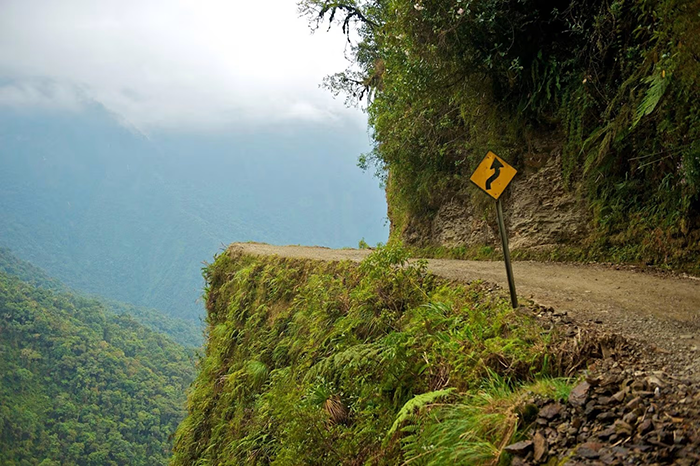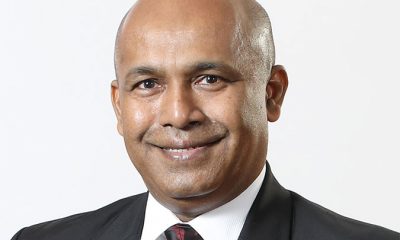Features
Perils to sustained growth

by Dr. G. Usvatte-aratchi
In 2013, Professor A. D. V. de S. Indraratne, the illustrious professor of Economics at Colombo, who was President of the Sri Lanka Economic Association, (they hold the 2023 sessions soon), along with his Committee, was prescient that the fiscal policies of the government might end in disaster and decided to devote the 2013 Sessions to explore ‘perils to sustained growth’ in the economy. The distinguished scholar and diplomat Jayantha Dhanapala was the Guest of Honour. I delivered the Keynote Address. The subject of my lecture was ‘Perils to Sustained Growth’.
Most economists then were troubled by the direction of fiscal and monetary policies at that time. They did not know for certain but were fearful that the massive public works that were undertaken with Chinese loans would not yield the output with which to service those loans. The greater part of the loans was to pay for burgeoning current expenditure. The government would hear none of those and went on with policies of large budget deficits.
A few weeks back, in a press release, the then President and Finance Minister and later Prime Minister of governments, shockingly took credit for reducing the tax revenue of the government year after year. It was shocking because whilst he reduced tax revenue of the government year by year, total government expenditure kept on growing. In a situation where tax revenue comprised more than 98 percent of total revenue of government, rising government expenditure had to be funded at the cost of a rapidly rising debt burden.
The debt from foreign sources had to be serviced with rising export income. Most alarmingly, the proportion of exports to GDP kept falling rapidly. Consequently, a budgetary crisis and a balance of international payments crisis would follow, as the day the night. It precipitated 2021-2022, when a President completely illiterate in economic policy reduced government revenue.
At the same time, he raised the demand for imports with agricultural policies that cut down the domestic food output. The fall in the output of export crops reduced import capacity. Little surprise that in 2022, the government had few choices but to declare bankruptcy.
In my Keynote Address in 2013, I laid bare the sequence of these likely events. I was surprised that policymakers took no notice of the clear warnings presented to them. I was shocked when the then President and Finance Minister, in late 2023, took credit for having actively contributed to that process of decay.
I had laid by that lecture because it was too long and ‘academish’ to be published in The Island, my usual outlet. (Most members of SLEA have higher degrees in economics.) There was no Review in Colombo that may have carried it. It was far too concentrated on Sri Lanka to be published in an international publication. However, after President Mahinda Rajapaksa’s claim, a few days ago, I thought I would seek the advice of the Editor of this newspaper on whether he and his readers would suffer the burden of reading that lecture. With his consent, I decided to publish it.
The text of the speech:
‘And so, we have gone on, and so we will go on, puzzled and prospering beyond example in the history of man.’Thomas Jefferson, 1812.How amazingly right Jefferson was: ‘puzzled and prospering beyond example in the history of man’! Yes, puzzled despite all the ingenuity of all economists since Adam Smith.
The central importance of sustained growth
The economic history of some parts of the world, during the last three hundred years, has been one of phenomenal economic growth. These parts include Europe, North America, Australasia and Japan. In 1,700 all people whether in Africa, Asia, America or Europe were more or less equally poor with a per capita income of about $700 per year at 1985 prices, less than $2 dollars per day. During the next 300 years these economies prospered ‘beyond example in the history of man’.
Much more recently we have had a large part of Asia, including China, Taiwan, India, Malaysia, and South Korea, Thailand and the two small economies of Hong Kong and Singapore grow at phenomenally high rates. In Latin America, after some spectacular growth at the turn of the 20th century, it is only recently that some countries have experienced sustained rapid economic growth. Africa is a late comer and there are signs that sub-Saharan countries finally may have begun to grow.
Sri Lanka has had a record of slow growth, ever since National Accounts began to be estimated but the last few years have shown an upturn in rates of growth. These rates of economic growth shorn of the fluff that the Central Bank tries to cover it with are not to be cavilled at. Your question at this session is how that higher rate of growth can be sustained, at least in the short term.
Let us not underestimate the central importance of fast economic growth to raise levels of living. C. Sivasubramonian (2000), [The National Income of India in the Twentieth Century, The Oxford University Press, New Delhi] estimated that the growth rate of GDP per capita 1901 to 1946-7 in India was 0.9 percent per year and the consequent rise in the GDP per capita was 0.1 percent per year.
At that rate you would have needed 700 years for GDP per capita to double! Contrast that with the experience between 2000-2001 and 2010-2011 when per capita GDP grew at 6.0 percent per annum. [These numbers are from Jean Dreze and Amartya Sen (2013), An uncertain Glory, India and its Contradictions, Princeton University Press, Princeton, NJ]. If that rate of growth were sustained over 35 years, living standards would rise eight times during the lifetime of an individual. However, recently we have seen perils to those high rates of growth.
‘… bang, confidence collapses, lenders disappear, and a crash hits.’
Perils to sustained growth have been studied over a long period of time. In the 20th century itself it was a major field of study. In those times this subject went under the title Trade Cycle. The last volume I remember is Robin Matthews’ ‘The Trade Cycle’ that came out in the year after I graduated. Wesley C. Mitchell’s ‘What Happens during Business Cycles’ had come out beyond the Atlantic much earlier in 1951. The subject is now studied as ‘Crises’, much of that literature coming out in America.
The most recent major study is Reinhart’s and Rogoff’s ‘This Time Is Different’ [2009], in which they studied debt default, whether domestic or foreign, which brought about crises that broke the process of sustained growth. Disruptions to growth arising from such crises are now the major threat to sustained growth, at least in the short and medium terms.
It was Reinhart’s and Rogoff’s conclusion after careful study that ‘… failure to recognize the precariousness and fickleness of confidence, especially in cases in which large short-term debts need to be rolled over continuously, is the key factor that gives rise to the ‘this-time-is-different syndrome’. Highly-indebted governments, banks, corporations or households can seem to be merrily rolling along for an extended period, when bang, confidence collapses, lenders disappear, and a crash hits.’ As you know this happened in the US and Europe in 2007-2008 and it almost took place in India in July-August this year.
The development of crises in the modern sense [the term has a respected longer-term usage] started in the 1970s. President Nixon freed the dollar from the price of gold in 1973. Petroleum exporting countries amassed large volumes of savings looking for financial investment opportunities. So was born the phenomenon of ‘petro-dollars’.
As emerging developing countries grew fast on the strength of exports, they amassed huge surpluses on the external account which formed sovereign wealth funds. The sum of such sovereign funds now probably exceeds $ 15 trillion sufficient to swamp any probable attempt to defend a rate of exchange of a country against adverse movements. And the electronic transfer of funds made it possible to jump from one market to another to profit from even small differences in interest rates, giving a new meaning to D. H. Robertson’s 1926 terms ‘money on wings’. Market opportunities became well known to advisors with the incredibly rapid transfer of information.
With these developments, major economic policies of countries, except those whose currency was acceptable for payment anywhere in the world and those others with huge exchange reserves, found their major domestic policies, ransom to market forces in international capital markets. India with $285 billion in foreign exchange reserves dared not defend the rupee against capital flight in mid-2013. Don’t take seriously the bravado here that $7 billion can do anything to protect the Sri Lanka rupee against even a small shift of short-term capital out of the country.
We spend more than we earn
I have used that extended quotation in the previous but one paragraph because the fundamental problem in our economy is that our economy spends more than it earns [GDP]. That gap is closed with resources from overseas. [This is explained extra-ordinarily well in Arvind Panagariya [2008], India, The Emerging Giant, Oxford University Press, Oxford].
A part of this gap is closed with savings of citizens of this country working overseas and remitting those savings to their home country, with foreign investments directly in the economy, another part with spare resources from accumulated foreign savings if any, and, in its absence, loans from overseas. In our case, in the domestic economy, the private sector does not invest all that it saves.
The government borrows a part of private savings to cover its own expenses. The balance savings it needs are borrowed from overseas. Our economy during the last five years has been accumulating foreign savings by borrowing from abroad, mainly to hedge against fast movements of short-term capital which comprise a part of our national debt. The flow of debt accumulates to form the foreign debt stock of the country. That part of the foreign debt owed by government has been high and fairly stable over the last few years.
To foreign markets and the short end of the market
There has been a marked shift to borrow from overseas and to borrow in the short term. This drive has been motivated by the need to keep interest on government debt in check because interest payments on government debt like all other government expenditure must come out of the Consolidated Fund to which all receipts of government in turn are credited.
Interest rates overseas continue to be lower than at home and interest rates at the short end are usually lower than interest rates at the long end. But these shifts to foreign sources and the short end itself are themselves fraught with serious risks. Any rise in interest rates in other markets shifts money sitting here short term immediately to fly to those other markets. Any loss of confidence in direction of domestic economic policy has the same consequences. To that degree, domestic economic policy is ransom to foreign investors.
Our governments have spent more than they collected in revenue for many years. In 2012, the ratio of total revenue of government to GDP was 13 percent and of total expenditure to GDP 20 percent. The ratio of government revenue to GDP has fallen consistently for several years. There has been some check on the growth of public expenditure, obviously not so severely as to bring down considerably the need to borrow from overseas. In any case, it is hard to make a case for cutting down government expenditure in this economy.
We know too much about the dreadful neglect of education and health in the aggregate and the dire need for reconstruction and development both in the Eastern and Northern Provinces and in the plantations in the central region. There must be immense restraint on the desire of an essentially populist government to control government expenditure in this manner.
Government cannot really cut down expenditure anymore without raising the ire of the public to boiling point. We are too close to what happened in Greece and Spain to risk that. Government must seriously consider why government expenditure on defence and public order and safety must remain at 15 percent of the total both in 2009 and 2012.
It certainly cannot raise government expenditure without first raising government revenue. It is the same populist inclinations which make it hard for government to tax people on whose vote it depends to win elections. Government has taxed heavily consumption of high-income groups. Without taxing the general public, it is in no position to raise revenue to pay for higher expenditure. And a populist government will not do it. That is the point at which long term growth becomes hostage to short term stability.
(To be concluded)
Features
‘Silent Majority’ abandoned to Long-suffering in regional conflicts

 With reports emerging that India has attacked some ‘sites’ in Pakistan and Pakistan-administered Kashmir, the question could be posed whether the stage has just been set for yet another costly India-Pakistan military conflict. Sensible opinion in South Asia could only hope that wise counsel would sooner rather than later come to prevail on both sides of the divide and that they would draw back from the brink of full-scale war.
With reports emerging that India has attacked some ‘sites’ in Pakistan and Pakistan-administered Kashmir, the question could be posed whether the stage has just been set for yet another costly India-Pakistan military conflict. Sensible opinion in South Asia could only hope that wise counsel would sooner rather than later come to prevail on both sides of the divide and that they would draw back from the brink of full-scale war.
The states concerned ought to know fully well the possible wide-ranging weighty consequences of another regional conflict. It should be plain to see that it would benefit none in the two theatres of confrontation, most particularly the relevant publics or the ‘Silent Majority’.
In fact, in connection with the mentioned initial military attacks, the Pakistani side has gone on record that some civilian lives have been lost. Such losses could burgeon in the event of full scale hostilities. These costs could of course be staggering and unimaginable in the event the nuclear option is resorted to by the sides, going forward.
Accordingly, the hope of the peace-loving world-wide is likely to be that India and Pakistan would give negotiations a chance and resolve their differences peacefully. It would be in the best interests of the world for the champions of peace to join their voices to that of UN chief Antonio Guterres and call on the sides to negotiate an end to their differences.
The utter helplessness and misery of the people of the Gaza ought to drive home afresh the horrors of war. Currently the news is that the Gazans are literally starving to death. Food and other essentials provided by UN agencies are reportedly being prevented by Israel from getting to the hapless people of Gaza. So dire is their situation that concerned quarters are calling on the compassionate worldwide to provide the Gazans with food, water and other essentials voluntarily. This SOS would need to be heeded forthwith.
Accordingly, it could be inferred that most formal arrangements, including those that are generally under the purview of the UN, geared to providing emergency humanitarian assistance to the needy, have, for all intents and purposes, been rendered ineffective in the Gaza. The UN cannot be faulted for this state of things; rather, Israel should be held accountable in the main for it.
The matter of accountability is central to the dramatic slide into lawlessness the world has been experiencing over the past few decades. As could be seen, International Law is no longer fully applicable in the conflict and war zones of the world because it is not being adhered to by many state and non-state aggressors. That the UN is hapless in the face of such lawlessness is plain to see.
We have of course the Middle East wherein International Law has fallen silent for quite a while. How could it be otherwise, when Israeli aggressions are being winked at by the US, for which the policy of backing Israel is almost sacrosanct?
Moreover, under President Donald Trump, it is difficult to see the US changing policy course on the Middle East. Trump made vague promises of bringing peace to the region in the run-up to his reelection but has done nothing concrete by way of peace-making. Consequently, complete lawlessness prevails in the Middle East. US policy towards Israel counts as another example of how the self- interest of US central administrations blinds them to their international obligations, in this case Middle East peace.
However, the commentator could be criticized as being biased if he holds only Israel responsible for what has befallen the Middle East. It has been the position of this columnist that Israel’s security needs should be taken cognizance of by its state and non-state adversaries in the Middle East and acted upon if the basis is to be laid for a durable Middle East peace. Inasmuch as Palestinian statehood must be guaranteed, the same should be seen as applicable to Israel. The latter too enjoys the right to live in a secure state of its own, unopposed by its neighbours.
The Ukraine of today is also sad testimony to the ill consequences of powerful, aggressor states wantonly disregarding International Law and its obligations. Nothing could justify Russia in invading Ukraine and subjecting it to a condition of Longsuffering. Clearly, Ukraine’s sovereignty has been violated and such excesses go to the heart of the current state of ‘International Disorder’. Of course the same stricture applies to the US in relation to its military misadventures in Afghanistan and Iraq, to name just two such modern examples.
There is no ducking the fact, then, that civilian publics in the mentioned theatres of war and outside, are being subjected to the worst suffering as a consequence of the big powers’ self-aggrandizement schemes and military misadventures. Longsuffering becomes the tragic lot of the people who have nothing to do with such unbridled power ambitions.
One would not be exaggerating the case if he states that civilian publics count for almost nothing in the present ‘International Disorder’. Increasingly it is becoming evident that from the viewpoint of the big powers and authoritarian governments the people are of little or no importance. Considering that self-aggrandizement is of the paramount interest for the former the public interest is coming to be seen as inconsequential.
Consequently, not much of a case could be made currently for the once almost reverentially spoken of ‘Social Contract’. For, the public interest does not count for much in the scrambles for power among the major powers who are seen at the popular level as the principal history-makers.
It is in view of the above that much is expected of India. Today the latter is a ‘Swing State’ of the first importance. Besides being a major democracy, it is one of the world’s principal economic and military powers. It possesses abundant potential to help to put things right in international politics. If there is one state in Asia that could help in restoring respect for International Law, it is India.
Considering the above, India, one believes, is obliged to bear the responsibility of keeping South Asia free of any more long-running, wasting wars that could aggravate the material hardships and socio-economic blights of the region. Thus, India would need to consider it imperative to negotiating peace with Pakistan.
Features
Memorable happening … Down Under

 Under the Global-Ise Australia Advanced Sports Development Programme, a delegation of 15 swimmers from Lyceum International School, Wattala, had the remarkable opportunity to train and experience high-performance sports development in Melbourne, Australia.
Under the Global-Ise Australia Advanced Sports Development Programme, a delegation of 15 swimmers from Lyceum International School, Wattala, had the remarkable opportunity to train and experience high-performance sports development in Melbourne, Australia.
The 10-day programme was carefully curated to offer intensive training, educational exposure, and cultural experiences for the young athletes.
The swimmers underwent specialised training through Swimming Victoria’s elite programme, held at some of Melbourne’s premier aquatic facilities.

Visit to Victorian Parliament
Each day began as early as 5:00 a.m. and continued until 7:00 p.m., ensuring a rigorous and enriching schedule that mirrored the standards of international competitive swimming.
Beyond training, the programme offered a wide array of experiences to broaden the students’ horizons.

Morning training
The tour group explored iconic landmarks such as the Victorian Parliament and the Melbourne Cricket Ground (MCG), and enjoyed shopping at Chadstone – The Fashion Capital. They also experienced the natural beauty of Victoria with visits to Yarra Valley Chocolaterie & Ice Creamery, and Cardinia Reservoir Park, where they observed kangaroos in their natural habitat.
An academic highlight of the tour was the group’s exclusive visits to three of Australia’s leading universities: the University of Melbourne, Monash University, and Deakin University. These visits aimed to inspire students and showcase the vast educational opportunities available in Australia.

Checking out the scene at Yarra Valley Chocolaterie & Ice Creamery
As part of the cultural immersion, Global-Ise hosted a traditional Australian BBQ at the Tim Neville Arboretum in Ferntree Gully. The students also enjoyed a variety of diverse culinary experiences each evening, further enriching their understanding of local and international food cultures.
The tour concluded with a celebratory dinner at the Spicy Wicket Restaurant, where each participant received a presentation in recognition of their involvement.

Enjoying an Aussie BBQ for lunch
The evening was made especially memorable by the presence of Pradeepa Saram, Consul General of Sri Lanka in Victoria.
Global-Ise Management—Ken Jacobs, Johann Jayasinha, and Dr Luckmika Perera (Consultant from the University of Melbourne)—did a magnificent job in planning and the execution of the advanced sports programme.

Coaches from Sri Lanka presenting a plaque to Global-Ise Management team
Ken Jacobs (centre), Johann Jayasinha, and Dr Luckmika Perera (on the right
Features
Bright, Smooth Skin

 Hi! How’s the beauty scene keeping with you?
Hi! How’s the beauty scene keeping with you?
Phew, this heat is awful but there is nothing that we can do about it.
However, there are ways and means to take care of your skin and I will do my best to help you in every way I can.
Well, this week, let’s go for a Bright, Smooth Skin.
Gram flour (also known as besan) is a traditional skincare ingredient known for its:
* Natural exfoliating properties.
* Ability to absorb excess oil.
* Gentle brightening and tan-removal effects.
* Suitability for all skin types, especially oily and acne-prone skin.
You will need 01–02 tablespoons gram flour (besan) and rose water, or raw milk, to make a paste.
You could add the following two as optional add-ins: A pinch of turmeric (for extra glow), and a few drops of lemon juice (for oily skin and pigmentation)
Add the gram flour to a small bowl and mix in the rose water (for oily/sensitive skin) or raw milk (for dry skin) slowly.
Stir well to make a smooth, spreadable paste—not too thick, not too runny.
Now apply this mixture, evenly, to your damp face and neck, and let it sit for 5–10 minutes (don’t let it dry completely if you have dry skin).
Gently massage in circular motions using wet fingers—this helps exfoliate.
Rinse off with lukewarm water, and then pat your skin dry.
Use it 02–03 times a week for best results.
Skin Benefits:
* Removes dirt, sweat, and oil without stripping natural moisture.
* Gently exfoliates dead skin cells, revealing smoother skin.
* Brightens the complexion and fades mild tanning.
* Helps clear clogged pores and reduce pimples.
* Leaves skin fresh and glowing—perfect for humid climates.
-

 News6 days ago
News6 days agoRanil’s Chief Security Officer transferred to KKS
-

 Opinion4 days ago
Opinion4 days agoRemembering Dr. Samuel Mathew: A Heart that Healed Countless Lives
-

 Business2 days ago
Business2 days agoAitken Spence Travels continues its leadership as the only Travelife-Certified DMC in Sri Lanka
-

 Business2 days ago
Business2 days agoLinearSix and InsureMO® expand partnership
-

 Business6 days ago
Business6 days agoCCPI in April 2025 signals a further easing of deflationary conditions
-

 Features6 days ago
Features6 days agoExpensive to die; worship fervour eclipses piety
-

 Features4 days ago
Features4 days agoTrump’s economic missiles are boomeranging
-

 Latest News4 days ago
Latest News4 days agoThe Heat index is likely to increase up to ‘Caution level’ at some places in Eastern, Northern, North-central and North-western provinces and in Monaragala and Hambantota districts.


















